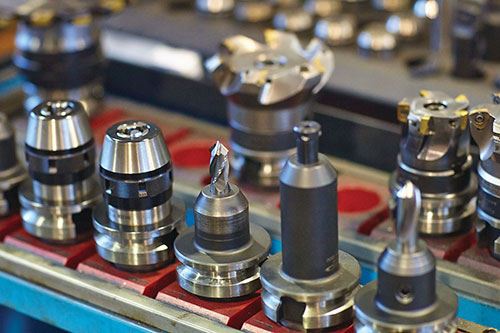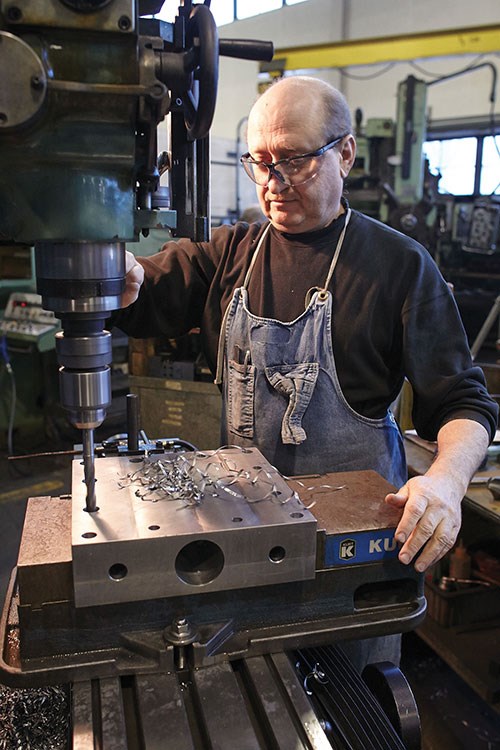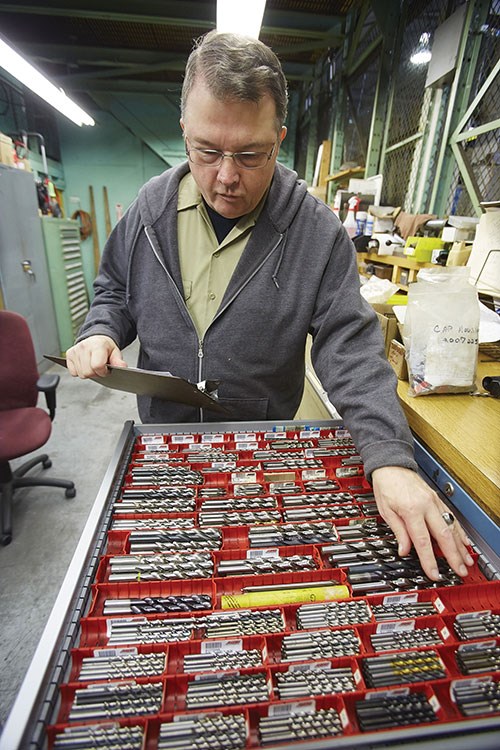Tooling Solutions Strengthen Company Competitiveness
Developing a good relationship with a tooling supplier MSC has been beneficial for contract manufacturing shop HyPex. By working together, they have been able to lower the shop’s cost per part, reduce cycle times and increase tool life.
Share


ECi Software Solutions, Inc.
Featured Content
View More
Takumi USA
Featured Content
View More





In today’s highly competitive environment, manufacturers risk losing business if they are not able to make low-cost, high-quality parts in the shortest amount of time possible. In an effort to meet these demands, HyPex sought outside application support from its tooling supplier to incorporate advanced cutters, optimize its machining techniques and improve part production. Through close collaboration with the supplier, the shop was able to reduce cycle times and cost per part while increasing cutting tool life and better managing its supply chain.
HyPex, a large contract manufacturing shop in Southampton, Pennsylvania, typically takes on jobs with lot sizes ranging from 1 to 3,000 pieces, some of which are recurring jobs while others are first-run. Part sizes vary from 1/2-inch square to as large as 60 inches in diameter, 120-inches long or 35-inches high. Some jobs require part tolerances to be held within ±0.0002 inch.
In one particularly challenging application, HyPex operations manager Lou Lanzilotta says the shop was taking twice as long as initially estimated to machine Nitronic 50, an expensive, high-nickel alloy with extreme corrosion resistance properties that makes it well-suited for undersea oil-well components. Enlisting the help of MSC Industrial Supply Co.’s metalworking specialist Don Kerns and associate Eric Gebhardt, the company was able to optimize the tooling for the Nitronic part, which in turn increased tool life along with speeds and feeds to shorten cycle times.
This wasn’t the first time HyPex had turned to MSC to gain the most productivity out of its manufacturing process. A large portion of HyPex’s tooling is Accupro and Hertel brands, both of which are exclusively carried by MSC. According to Brett Lister, shopfloor foreman, these lines provide the “best bang for the buck” for the shop’s general machining applications. The shop uses the tooling primarily for cutting aluminum workpieces, which can measure as large as 10 by 4 feet. On average, the shop removes 30 percent of a part’s raw material during machining operations, so it is imperative that cutters run as fast as possible.
To enable these faster feeds and speeds, HyPex relies on Accupro carbide end mills ranging in size from 0.187 to 1 inch in diameter and designed to provide efficient chip evacuation. The shop uses three-flute end mills to cut aluminum and four-flute end mills to cut stainless and regular steel. The end mills feature 40-degree helix angles for higher sheer action and smoother surface finishes. HyPex also uses Hertel 3-inch-diameter face mills and shell mills to cut stainless steels in peripheral, shoulder, angled-ramping and pocket-milling operations. The tooling also enables axial and helical plunging, trochoidal slot milling, standard slot milling, and shoulder and face milling. According to Mr. Lister, the performance of both Accupro and Hertel tooling continues to exceed his expectations. For example, in a recent job in which the shop needed to machine flame-cut parts, he used a 3-inch shell mill with Hertel inserts. He says the tool removed the tough scaling left behind from the flame cutting operation and the inserts lasted through a complete part.
While optimized tooling has helped improve many of HyPex’s operations, Mr. Lanzilotta warns that a tool will not yield its full potential unless run at the proper parameters in terms of speeds, feeds and depths of cut. He says that MSC’s metalworking specialists go beyond just suggesting new tooling technology—they also know how the tools ideally should be run. “In several instances, we have been able to optimize machining operations without having to switch to different tooling,” he explains. “Instead, we apply different machining strategies and new cutting parameters. These new techniques help us increase metal removal rates and shorten part cycle times.”
Mr. Lanzilotta adds that MSC encourages HyPex to think outside the box in terms of process improvements that will help the shop stay productive and profitable. For instance, the shop commonly faced bottlenecks in its tooling inventory management. There was no inventory system in place and tooling was scattered all around the shop, Mr. Lanzilotta explains. When it came time to run jobs, the shop was often missing required inserts or lacking the necessary end mills. In fact, he says, the company performed a 5S analysis on its tool crib and found approximately $8,000 worth of duplicate tooling in fixture boxes for jobs that had not run in years.
To give the company better visibility of its tooling inventory, it adapted MSC’s comprehensive supply chain solutions for inventory management including its vending system and Vendor Managed Inventory (VMI) service more than 5 years ago. Now, the shop knows exactly what it has on hand and what is being used. “When jobs are ready to run, all the needed tooling is in the system, and there are no delays or time wasted looking for tools,” Mr. Lanzilotta says. Additionally, the VMI service relieves HyPex employees of the burden of tracking tooling inventory. Once a week, MSC’s support team visits the shop and ensures the tooling inventory is well-managed and properly stocked. Everything is tracked with MSC’s inventory management solution.
Related Content
Solve Worker Shortages With ACE Workforce Development
The America’s Cutting Edge (ACE) program is addressing the current shortage in trained and available workers by offering no-cost online and in-person training opportunities in CNC machining and metrology.
Read MoreWorkholding Fixtures Save Over 4,500 Hours of Labor Annually
All World Machinery Supply designs each fixture to minimize the number of operations, resulting in reduced handling and idle spindle time.
Read MoreFinding Skilled Labor Through Partnerships and Benefits
To combat the skilled labor shortage, this Top Shops honoree turned to partnerships and unique benefits to attract talented workers.
Read MoreThe Power of Practical Demonstrations and Projects
Practical work has served Bridgerland Technical College both in preparing its current students for manufacturing jobs and in appealing to new generations of potential machinists.
Read MoreRead Next
Registration Now Open for the Precision Machining Technology Show (PMTS) 2025
The precision machining industry’s premier event returns to Cleveland, OH, April 1-3.
Read MoreSetting Up the Building Blocks for a Digital Factory
Woodward Inc. spent over a year developing an API to connect machines to its digital factory. Caron Engineering’s MiConnect has cut most of this process while also granting the shop greater access to machine information.
Read MoreBuilding Out a Foundation for Student Machinists
Autodesk and Haas have teamed up to produce an introductory course for students that covers the basics of CAD, CAM and CNC while providing them with a portfolio part.
Read More















.png;maxWidth=150)
























.jpg;maxWidth=300;quality=90)










